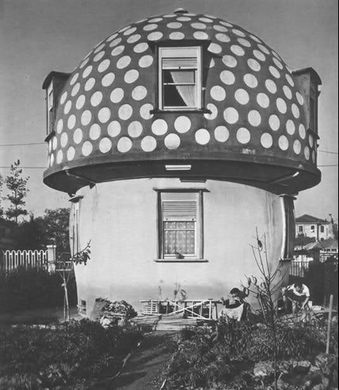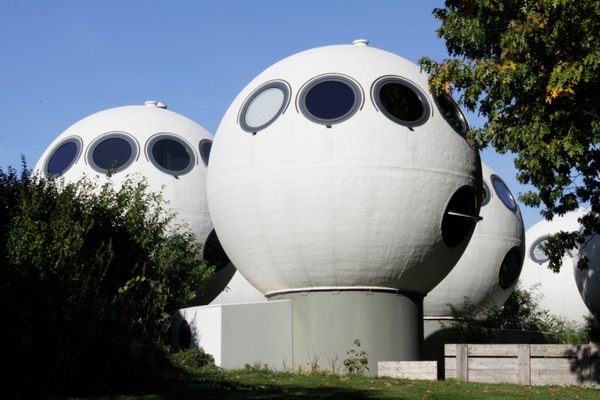AO Edited
Case a Igloo
In the 1940s, Italian architect Mario Cavallè built a dozen of these round homes in northern Milan.
Northern Milan, where the urban fabric stretches towards Greco Pirelli and the old industrial area of the city, hides one of the most curious residential experiments ever built in Italy: Mario Cavallè’s igloo houses.
We are in via Lepanto, Maggiolina district, close to the so-called Journalists’ Village. The district contains housing and social housing for the Milanese small and medium bourgeoisie, designed by the engineer Evaristo Stefini and built by a cooperative—mainly composed of journalists, publicists, and lawyers—between 1909 and 1912 in the then-Municipality of Greco. It was a project born following an editorial published in 1911 by Mario Cerati, director of Il Secolo, in which it was denounced how the attention of the government was concentrated only on the working masses and on popular urban planning, while the neighborhoods of the middle bourgeoisie were scarce.
In 1946, between two- and three-story Art Nouveau buildings and large green spaces that make this district the first example of a city-garden in Italy, the eight concrete igloos were built as a project by the engineer Mario Cavallè, who was also responsible for the mushroom houses in the Maggiolina district (demolished in the 1960s). Cavallè was also known for being one of the leading experts of those years in the field of cinema architecture.
The housing model and construction technique of igloo houses, also called pumpkin houses, are a legacy of the United States, where the architecture of circular houses was formed and where, in those years, the architecture of circular houses was quite widespread. From here Cavallè took inspiration for designing houses with a circular plan of about 50 square meters developed on two levels (basement and first floor).
The vaulted construction system, made up of perforated bricks arranged in converging lozenges, allowed maximum freedom on the layout of the interior spaces. The original layout included an entrance, bathroom, two bedrooms, and a kitchen.
Cavallè’s project, which today appears eccentric, was actually quite concrete: 12 temporary housing units that could have represented a quick response to the needs of displaced families whose houses were destroyed by the bombing of the Second World War.
Today only two igloo houses are in their original configuration, while the others have undergone major expansion and renovation: one of them has a new compartment added to the original igloo, intended as a bathroom, while another has been redesigned as an open loft space.
The igloo houses and the two mushroom houses by Mario Cavallè alla Maggiolina appealed to the inhabitants, who decided to stay and live in them. The igloo houses were almost demolished in the 1960s, but the architect Luigi Figini mobilized to prevent them from being torn down.
Know Before You Go
How to get to the igloo houses in Milan: Lilac underground line, Marche and Istria stops.
Plan Your Trip
The Atlas Obscura Podcast is Back!



















Follow us on Twitter to get the latest on the world's hidden wonders.
Like us on Facebook to get the latest on the world's hidden wonders.
Follow us on Twitter Like us on Facebook